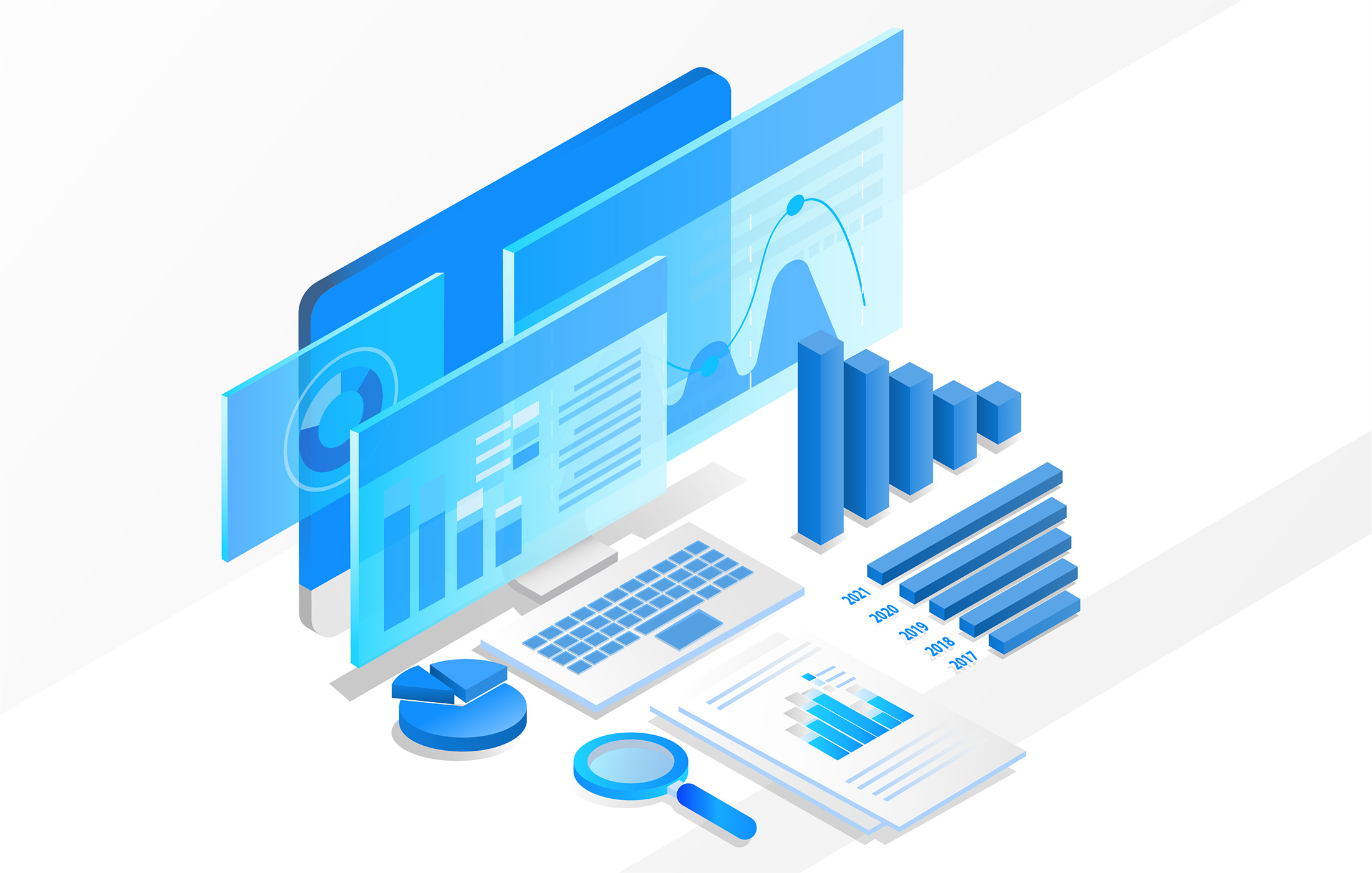Our firm recently hired its first data scientist to complement the consulting team of health actuaries and clinicians. The Actuarial profession is very small and niche, with many people outside of the insurance and pension industries having never heard of it. Data science is a new field, and even those who are aware of data scientists may struggle to define exactly what they do and what differentiates them from actuaries. The rest of this article provides an overview of both professions and compares the similarities and differences between them.
Data Scientist
A data scientist is a professional that is trained in the discipline of data science. Data science is a relatively new profession that not many have heard of until a few years ago when job openings for “data scientist” started popping up everywhere. In fact, Glassdoor has ranked data scientist the #1 job in America four years in a row (2016-2019) with a median base salary of around $110,000. With the high ranking and the high salaries, it is no wonder why it has received so much attention in recent years. So what exactly is this profession that no one has heard of until recently, but is ranked so high and pays so well? Wikipedia describes data science as the following:
Data science is a “concept to unify statistics, data analysis and their related methods” in order to “understand and analyze actual phenomena” with data. It uses techniques and theories drawn from many fields within the context of mathematics, statistics, computer science, domain knowledge and information science.
Now that we have a description of what data science is, how does one qualify for a job as a data scientist? After reviewing a couple of dozen job openings on Glassdoor, we came up with the following generic description of job duties and qualifications for data scientists:
Job Duties:
- Identify opportunities for leveraging big data to drive business solutions.
- Analyze data from company databases and external data sources.
- Process, clean, and verify the integrity of data used for analyses.
- Develop and optimize models and algorithms to apply to data sets.
- Build predictive models using machine learning techniques.
- Develop processes and tools to monitor and analyze model performance.
Qualifications:
- Degree in a quantitative field (e.g., mathematics, statistics, computer science, etc.).
- Advanced degree preferred (Master’s or PhD.).
- Experience with databases and SQL programming.
- Experience with statistical modeling concepts and machine learning techniques.
- Experience with statistical programming software such as R, SAS, or Python.
Actuary
An actuary is a professional that is trained in the discipline of actuarial science. Wikipedia describes actuarial science as the following:
Actuarial science is the discipline that applies mathematical and statistical methods to assess risk in insurance, finance, and other industries and professions. More generally, actuaries apply rigorous mathematics to model matters of uncertainty.
The actuarial profession has been around a long time and is well established in the United States. The first professional actuarial organization in the U.S. was formed over 130 years ago, and actuaries have been practicing within the U.S. health insurance industry since at least the 1950’s. The role of the actuary within the health insurance industry has traditionally been to assess the financial risks associated with underwriting. In practical terms, this means that actuaries price health insurance coverages and estimate financial reserve requirements. Both of those roles require the health actuary to study historical health care claims data and apply mathematical and statistical models to make predictions about future costs.
To become qualified as a health actuary, one must pass a series of rigorous exams that requires mastery in mathematical and statistical insurance concepts as well a deep level of health insurance domain knowledge. In more recent years, topics in predictive analytics and the use of statistical software such as SAS and R to analyze health care data has been added to the exam syllabus. These additions are the result of data becoming more accessible due to lower costs of hardware to store massive volumes of data, and companies viewing their data as an asset from which valuable insights can be extracted. Accordingly, health insurers have been expanding their actuarial departments beyond the traditional actuarial roles (pricing coverages and estimating reserves) and into all sorts of data analytics and predictive modeling. The actuarial department is often chosen by senior management for important analytical projects because the skillset needed to perform data analytics shares a large overlap with the skillset that is developed through actuarial training.
Similarities
The Wikipedia descriptions of both professions emphasized the terms “Mathematics” and “Statistics”. Because of this emphasis on math and statistics, both professions tend to target candidates that have educational backgrounds that are heavily quantitative. The job description provided earlier for a data scientist required a degree in a quantitative field such as math, statistics, or computer science. The reason why a degree in data science was not listed is because it is such a new field that a lot of colleges and universities are scrambling to create a formal degree specifically for data science. Even the data science degrees that do exist today tend to look a lot like a mixture between mathematics, statistics, and computer science. Actuarial positions usually do not specifically require a degree in actuarial science or another quantitative field; however, the actuarial exams themselves are very computational, so there is a heavy bias towards people with quantitative backgrounds entering the actuarial field.
Both professions require savviness with data modeling and statistical software. A large portion (but certainly not all) of actuaries would consider themselves to be experts with Excel spreadsheets. A smaller but still significant portion consider themselves to be experts with SQL database programming or experts with data modeling using statistical software such as Python, R, or SAS. Data science roles usually require significant experience and expertise with data modeling with one or more statistical software packages.
Differences
One of the main differences between an actuary and a data scientist is related to qualification barriers to enter each profession. To become qualified as an actuary, one must pass the actuarial exams which typically take between 5 to 10 years to finish (many do not finish). One does not need to pass the actuarial exams to work as a data scientist within an insurance company. In fact, the data science profession does not have any formal exam requirements. There are several data science certifications available, although there are no universal requirements to obtain these certifications. Data scientists do not have a unifying authority (e.g., the Society of Actuaries for health actuaries) to specify what being “certified” as a data scientist entails. Due to this lack of standardization and many employers being unaware of what knowledge/skillsets a particular certification grants, no certifications are formally required to work as a data scientist. Instead, data scientist job openings often prefer, or even require, that the candidate has an advanced degree in a relevant field of study (e.g., a PhD. in Statistics or Computer Science).
A good data scientist needs to have expert domain knowledge, and that expertise only comes with years of experience within that industry.
Another main difference is the industry in which each professional practices. Actuaries have historically been limited to the insurance and pension industries (although the actuarial organizations have been trying to market the actuarial profession to other industries as well). The actuarial exams are tailored towards insurance mathematics and insurance domain knowledge. In contrast, data science can be applied to any industry that produces a large enough volume of data to build models and produce reliable predictions. Now, that does not mean that data scientists can seamlessly cross industries. A good data scientist needs to have expert domain knowledge, and that expertise only comes with years of experience within that industry. The actuarial profession has a reputation for having two characteristics within the insurance industry: (1) quantitative savviness, and (2) domain knowledge expertise. The data science profession is known for quantitative savviness with data but is not known to have specific domains of expertise. Data science is still a very young profession, though, so its reputation will certainly evolve over time. For now, each individual data scientist must build their own reputation as domain experts in their field of practice.
Conclusion
Actuaries and Data Scientists have a significant overlap in their quantitative educational backgrounds and technical skillsets; however, their skillsets are applied to different industries and in different ways. The actuarial profession is much more established and has traditionally been more narrowly focused on pricing coverages and estimating reserves within the insurance industry. That narrow focus has branded actuaries as domain knowledge experts within the insurance industry and that includes being the experts at analyzing and modeling health care claims data.
Data Science is a new profession that grew in response to an abundance of data all around us, the availability of sophisticated analytical tools, and companies within various industries viewing their data as a potential gold mine for valuable insights. The goal of the data science profession is to help extract those valuable insights from the data and help senior management make strategic decisions based on those insights.
Although there is significant overlap between the two professions, we believe they complement each other very well and we envision that actuaries and data scientists will be working closely together within the health insurance industry. Actuaries are the domain experts, but data scientists bring robust software and data modeling skills to the table. For example, an actuary may have the vision to create a complex model using health care claims data, a data scientist may provide expertise on how to manipulate the data to fit that model, and the actuary may be aware of nuances in the data to account for while manipulating the data. An organization with a good mix of actuaries and data scientists working together will achieve more than an organization without synergy between these professions. The two professions together, along with clinicians, are well situated to tackle some of health care’s most complex problems.
About the Author

Cory Ulm is a Data Scientist for Axene Health Partners, LLC and is based in AHP’s Pittsburgh, PA office.
Any views or opinions presented in this article are solely those of the author and do not necessarily represent those of the company. AHP accepts no liability for the content of this article, or for the consequences of any actions taken on the basis of the information provided unless that information is subsequently confirmed in writing.

